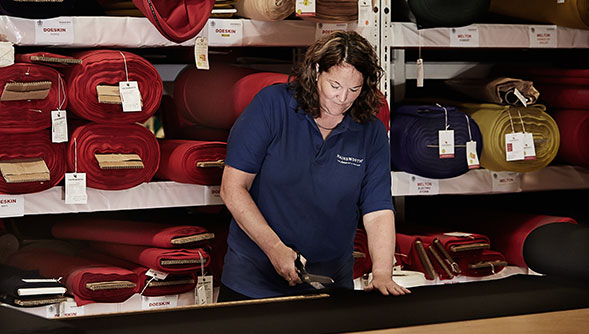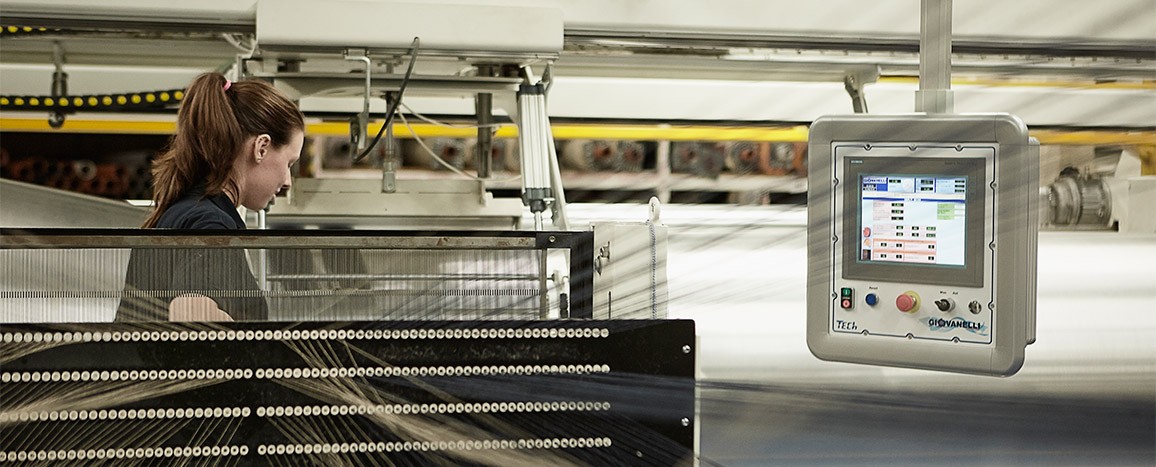Our Manufacturing
Spring Valley Mills has been the home of the Hainsworth family business since the early 1800’s. A fully vertical mill, one of the very few still remaining in the UK we carry out every process in house, from the selection of raw wool bought from as far as Australia and New Zealand through to the finished cloth. Our manufacturing facility is also able to offer commission manufacturing and finishing processes to other businesses and mills.
Fibre
Our process always starts with one thing, the selection of only the finest and highest performance fibres in the world. This is an area of expertise that has been passed down through generations of the family. We use only the best wool from Britain, Australia and New Zealand. Different climates result in different wool qualities, to ensure we are using the perfect wool for each product we ensure we purchase a variety of quality raw fleece by visiting sheep farms, auction houses and merchants all over the world.
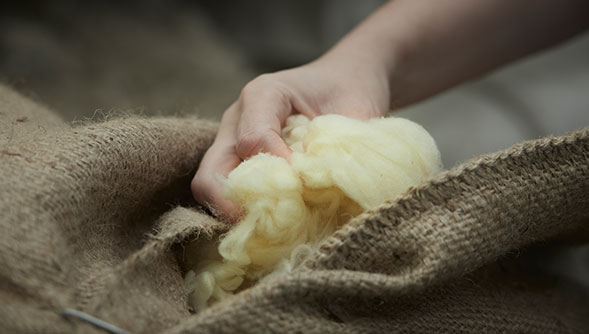
Blending
The efficient mixing together of various lots of fibres, which may be of different properties i.e. fibre type, fibre length, diameter or colour is crucial to making a Hainsworth fabric. We use our expertise to match the properties of each fibre to final end use of each piece of cloth to ensure that we maximise the benefits to our customers and create blends (or recipes) that have the perfect mix of attributes. We blend the combination of fibres in order to produce a consistent homogenous mass which is regular and consistent in all its properties.
During the blending process fibres pass through opening machines which separate the fibre staples and remove any loose contaminants. Lubricants are then added to facilitate fibre movement without excessive fibre damage.
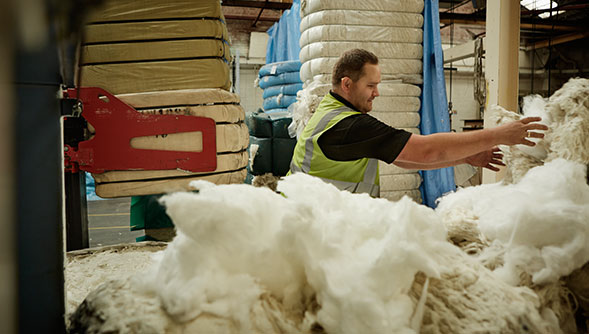
Carding
Carding is the process of disentanglement, cleaning and intimate mixing of fibres to produce a continuous web or sliver suitable for using through the spinning process.
The carding machines have two main sections, scribbler and carder, each consist of a series of large rollers called swifts and each of these contain pairs of small rollers around their upper circumference called workers and strippers. Every roller is covered with fine card wire and by varying the speeds of the rollers we can control and align the fibres as they pass through the machine.
At the end of the machine an even web of fibre is removed and passed through the final part of the machine called the condenser. Here a series of flexible narrow tapes separates the fibre web into narrow strips and carries these into the rubbing section which converts these parallel strips into rounded form called slubbings which are then wound side by side onto condenser bobbins in preparation for spinning.
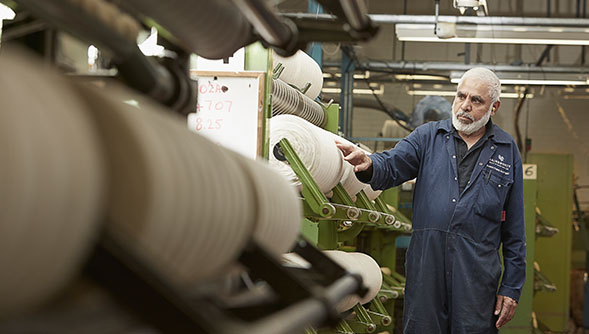
Spinning
During spinning the slubbings from the carding process are converted into a yarn with a specific degree of fineness and twist. The most common yarn spinning machines used in the woollen system are ring frames, rotating slubbing threads are passed through a stretching zone called drafting. Here two pairs of rollers operating at different speeds are used to introduce a controlled degree of stretch.
The degree of draft can be adjusted to give the required yarn thickness. After drafting the yarn is wound onto a tube fixed on a rotating spindle. The tube and spindle revolve at a predetermined speed and the revolution of the spindle causes a permanent degree of twist to be inserted into the yarn. The amount of twist can be adjusted by changing the revolutions of the spindle and the speed of yarn delivery. The degree of fineness of the spun yarn is usually described by a numerical system of measurement called a count system.
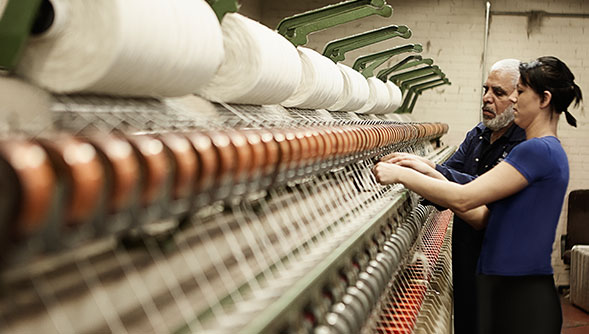
Warping
In warping yarns are arranged onto a beam in long parallel lengths of equal tension ready for weaving.
During warping, cones of yarn are placed onto a rack called a creel. From this creel yarn passes through tension and spacing devices and through a leasing reed which separates the yarn threads and keeps them in the correct order before being wound onto a warping balloon.
When the correct amount of yarn has been added the warp is removed from the balloon and transferred onto a warping beam ready for the weaving process.
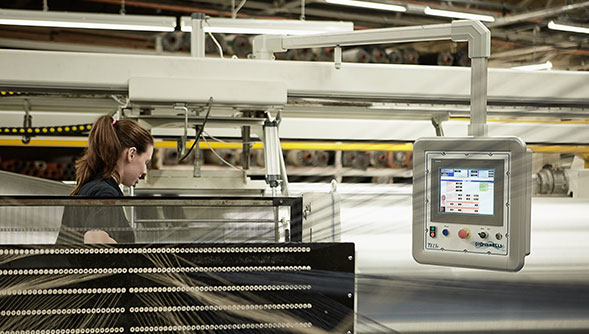
Weaving
Weaving is the interlacing of warp and weft threads on a loom to manufacture a woven cloth. A basic weaving loom comprises of the weaver’s beam which holds the warp yarn, heald shafts which control the warp threads, a reed to space the warp threads and to push the weft threads (picks) into the cloth, a means of inserting the weft picks and a cloth roller onto which the woven fabric is wound. Hainsworth can weave a variety of fabric widths up to 452cm wide, we are proud to have the UK widest looms.
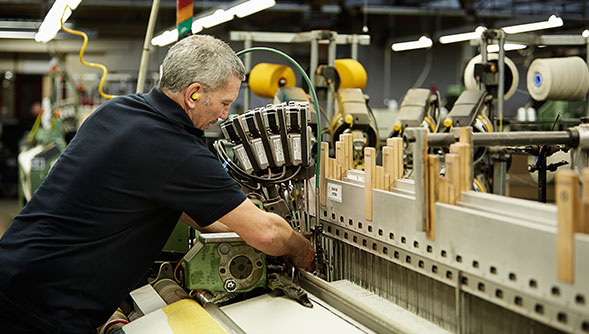
Dyeing
Hainsworth fabrics are notable for their pure deep colour that doesn’t fade, we have a fully equipped dye house allowing us to obtain a uniform distribution of colour throughout the fabric. The dyestuffs are fed from a mixing kitchen directly into the dye vessels. Once the dyeing cycle is complete samples are taken from the pieces and checked against colour standards stored in our computer database. This ensures a consistency of shade from batch to batch.
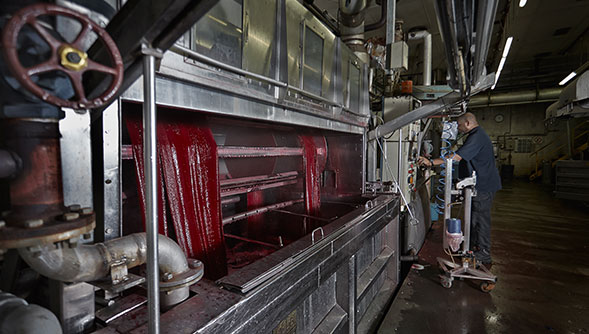
Finishing
Hainsworth have a specialised range of finishing equipment which can be used to impart bespoke finishes to a variety of fabrics. This equipment includes raising machines used to lift fibres to improve fabric handle, boiling and blowing machines used to set fabrics, padding machine used to apply chemical finishes and brushing machines used to improve fibre alignment.
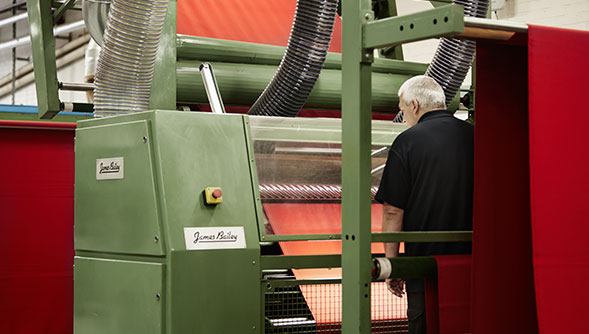
Conversion
Our Conversion team produce utilise a variety of techniques such as cutting, sewing, eyeletting and punching to produce finished products which match precise customer specifications.
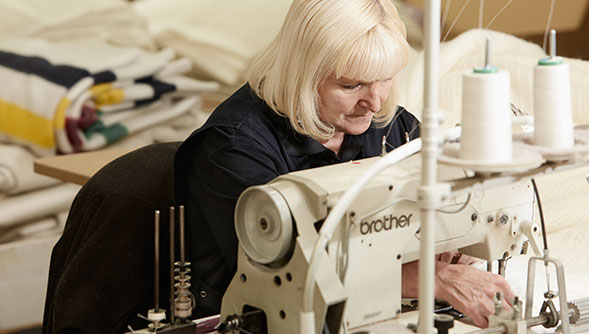
Printing
We have our own in house design and screen printing department. Here a mask of a design is produced and exposed onto a nylon meshed screen which after treating and washing produces a design that is stenciled into the open mesh of the screen. Coloured inks are then passed across the screen using squeegees to apply the ink through the open sections of the mesh onto the fabric. Various types of inks and pastes can be used dependant on the design application criteria.
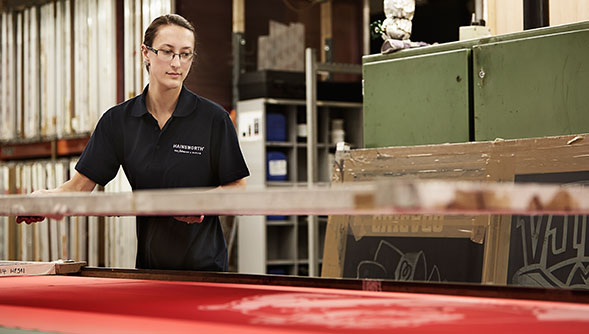
Warehouse
Many of our fabrics are held in stock our warehouse holds all items ready for order and dispatch across the globe.
